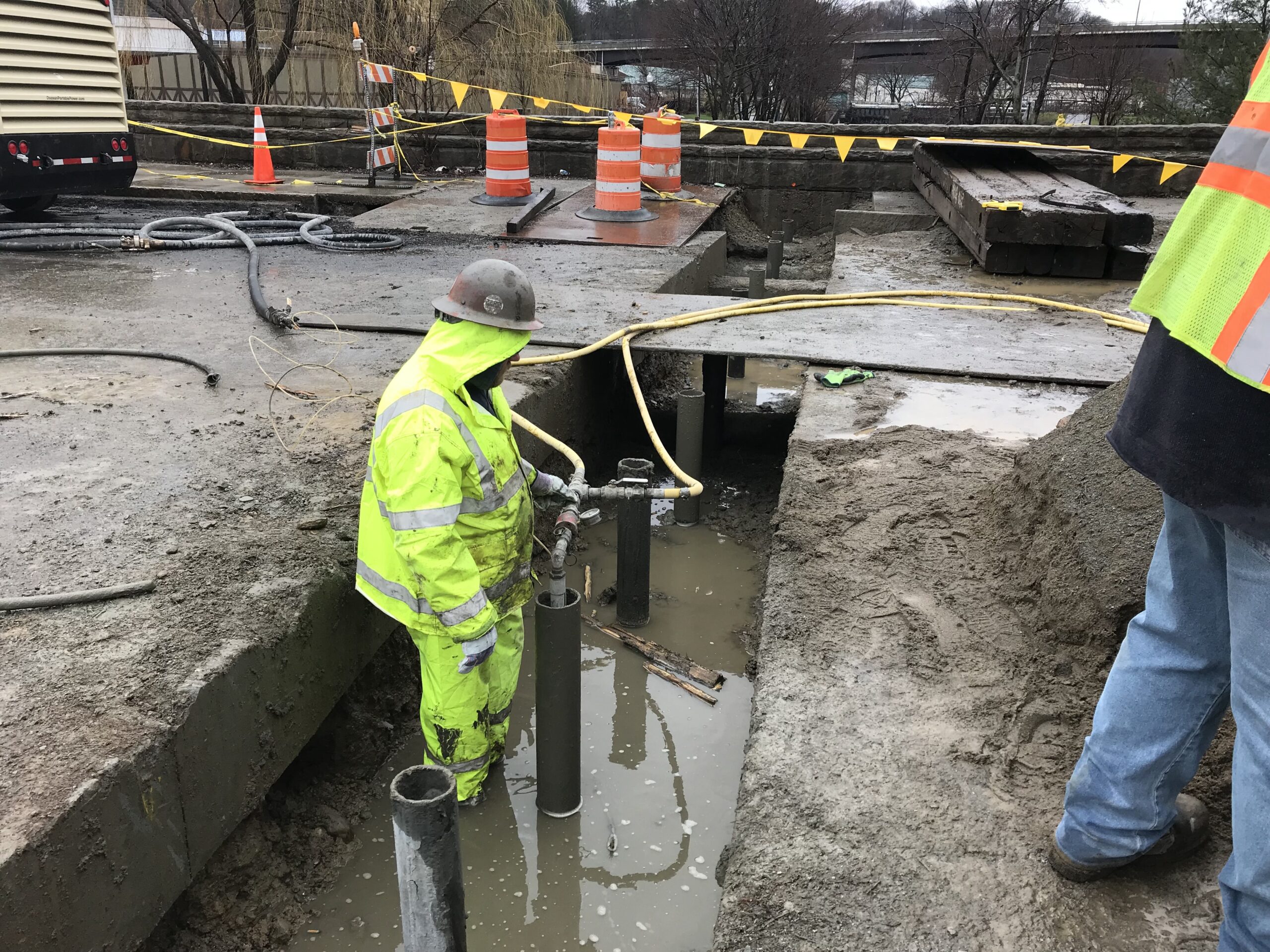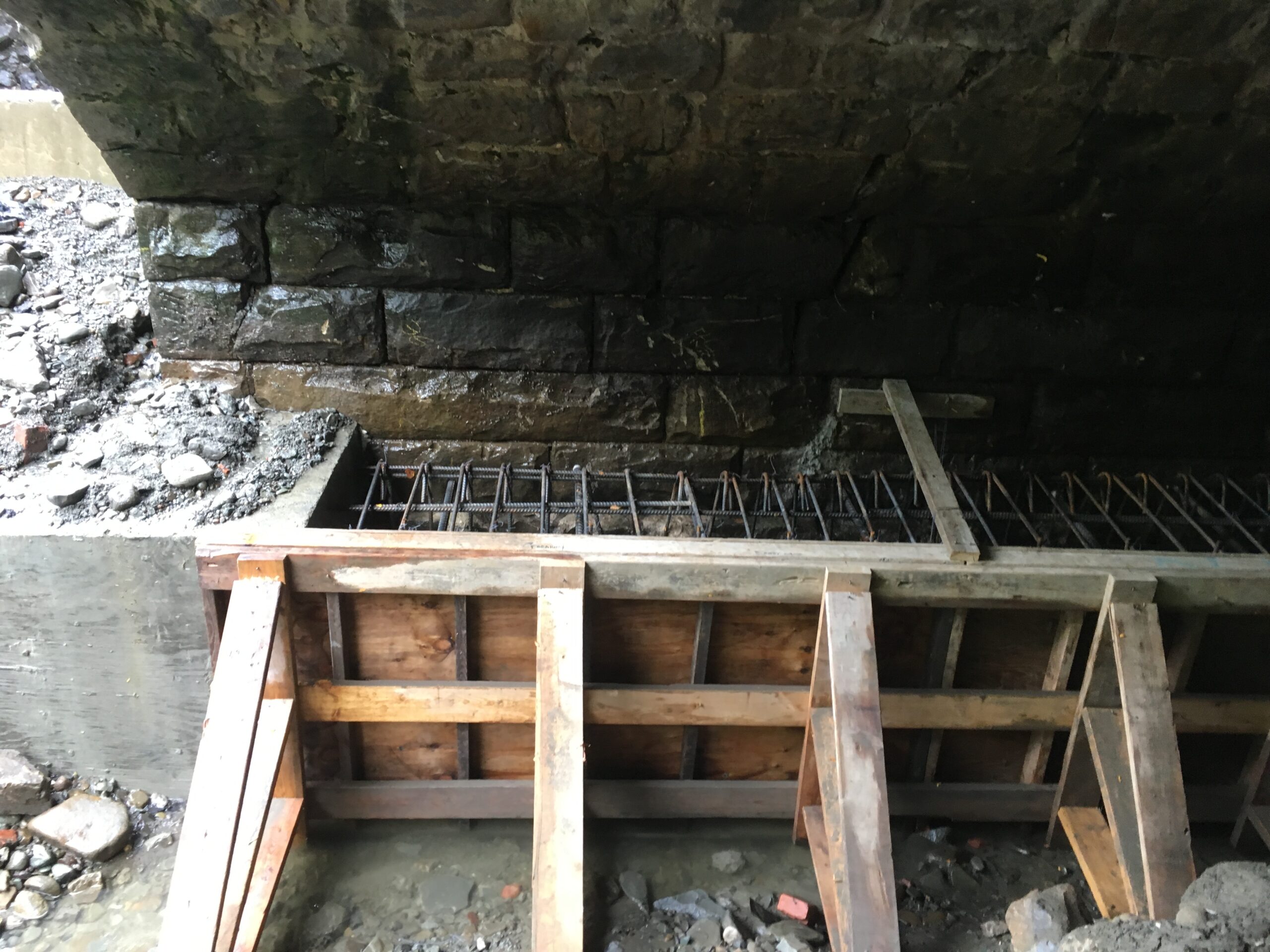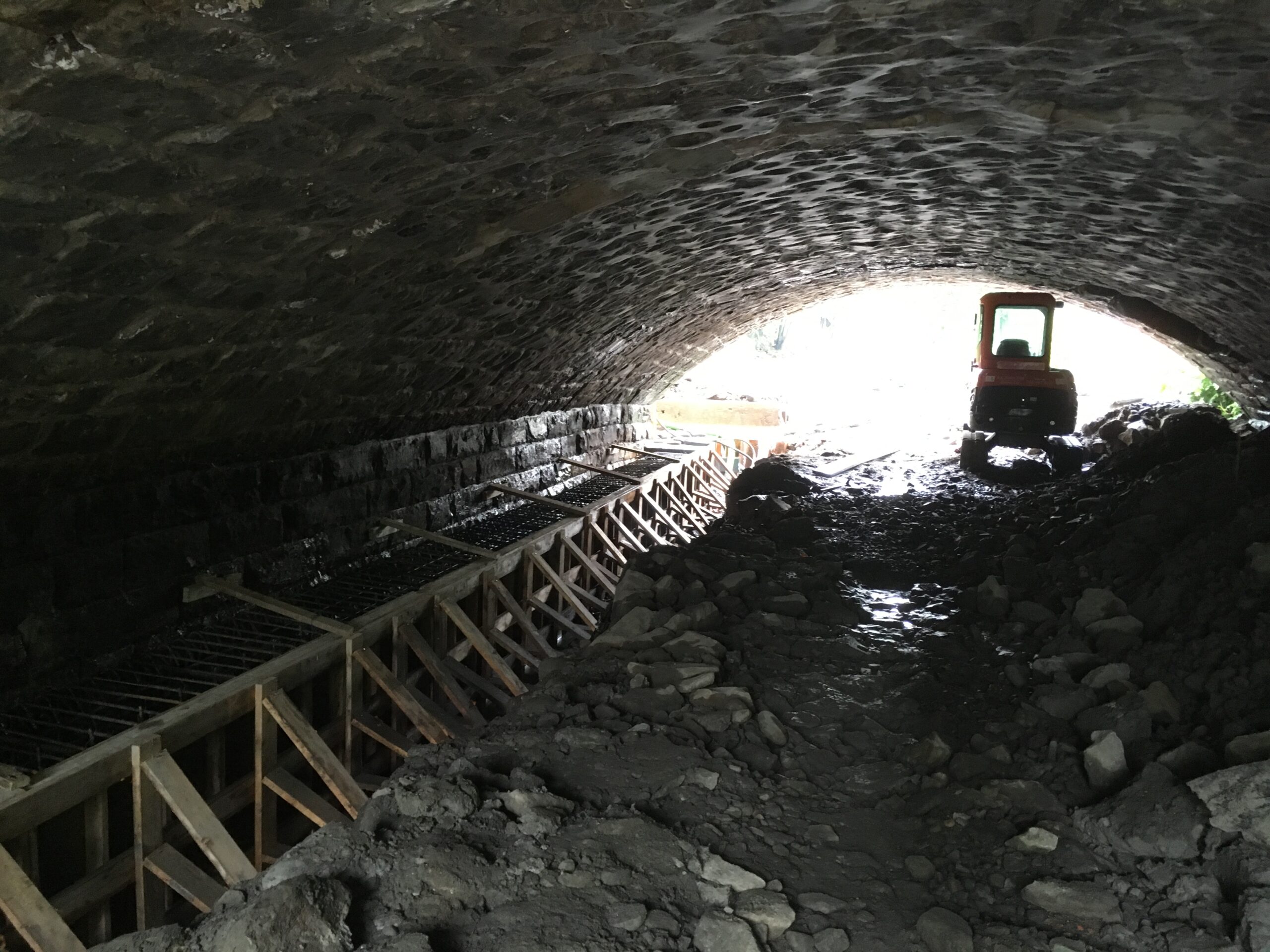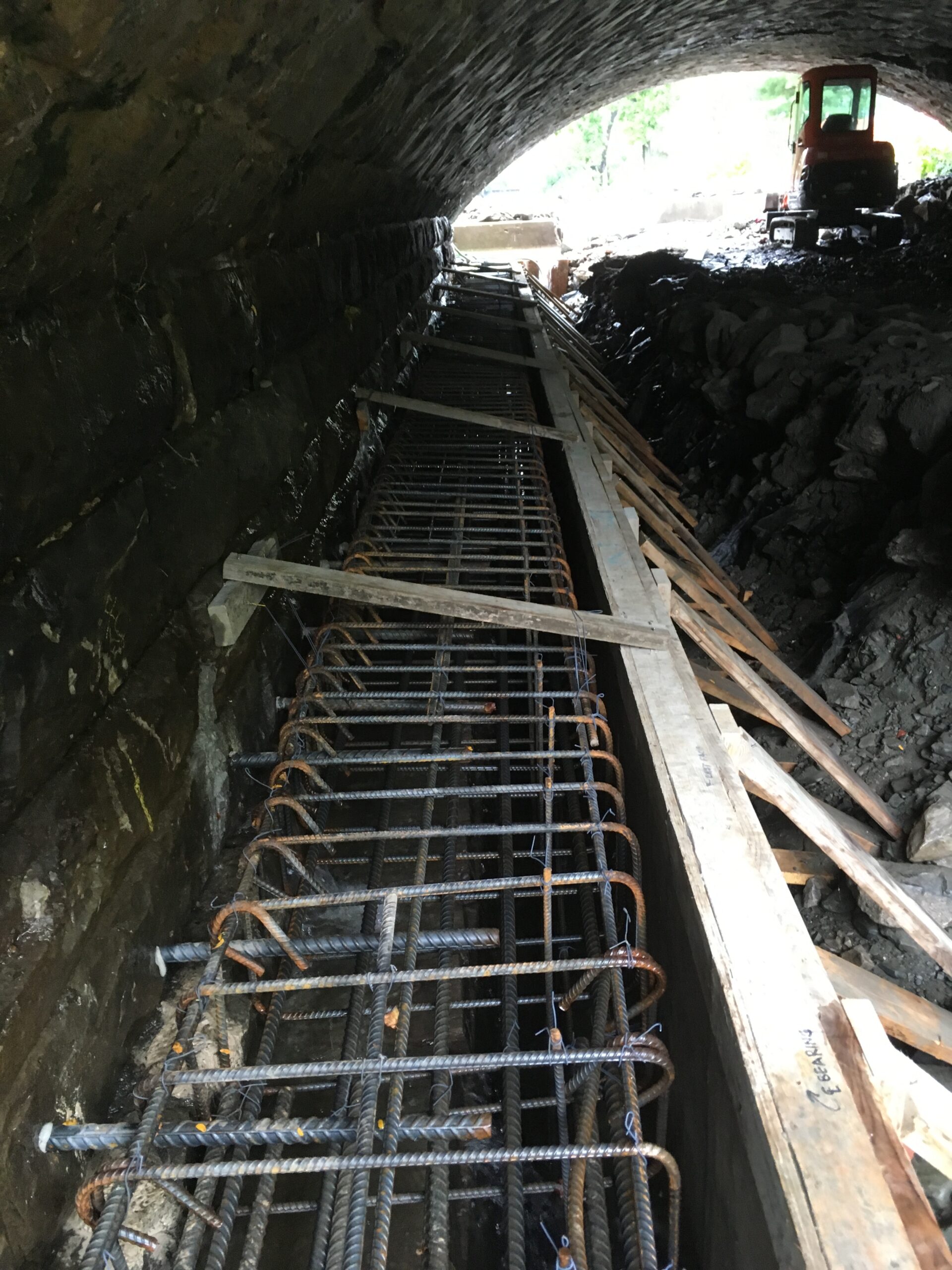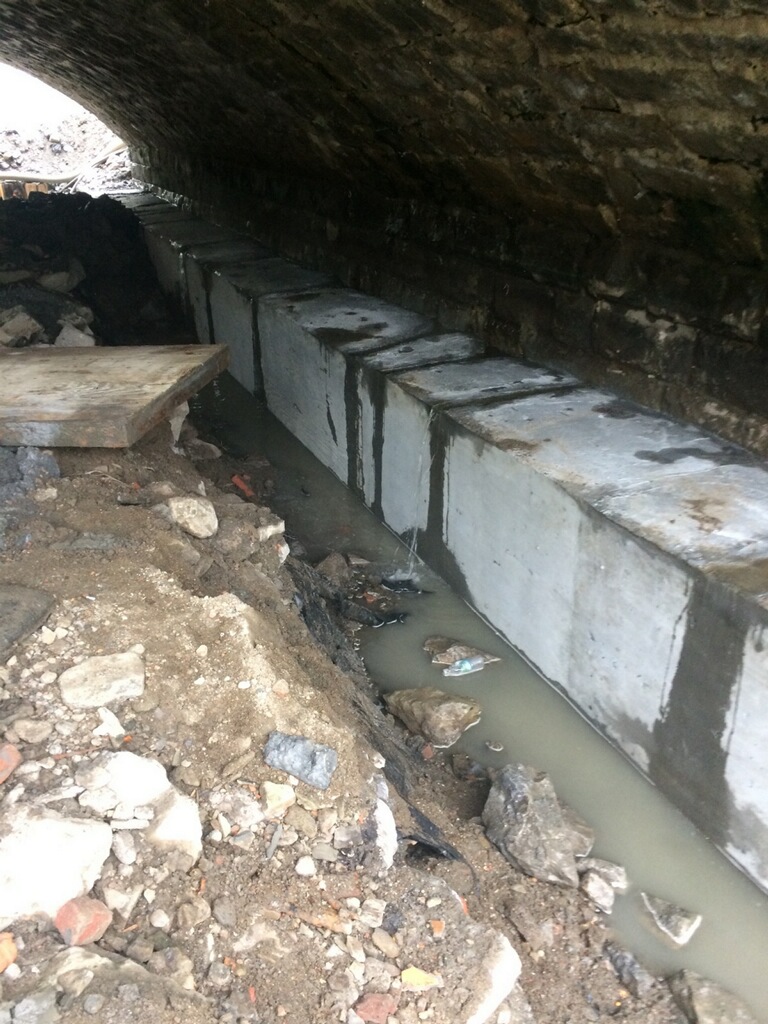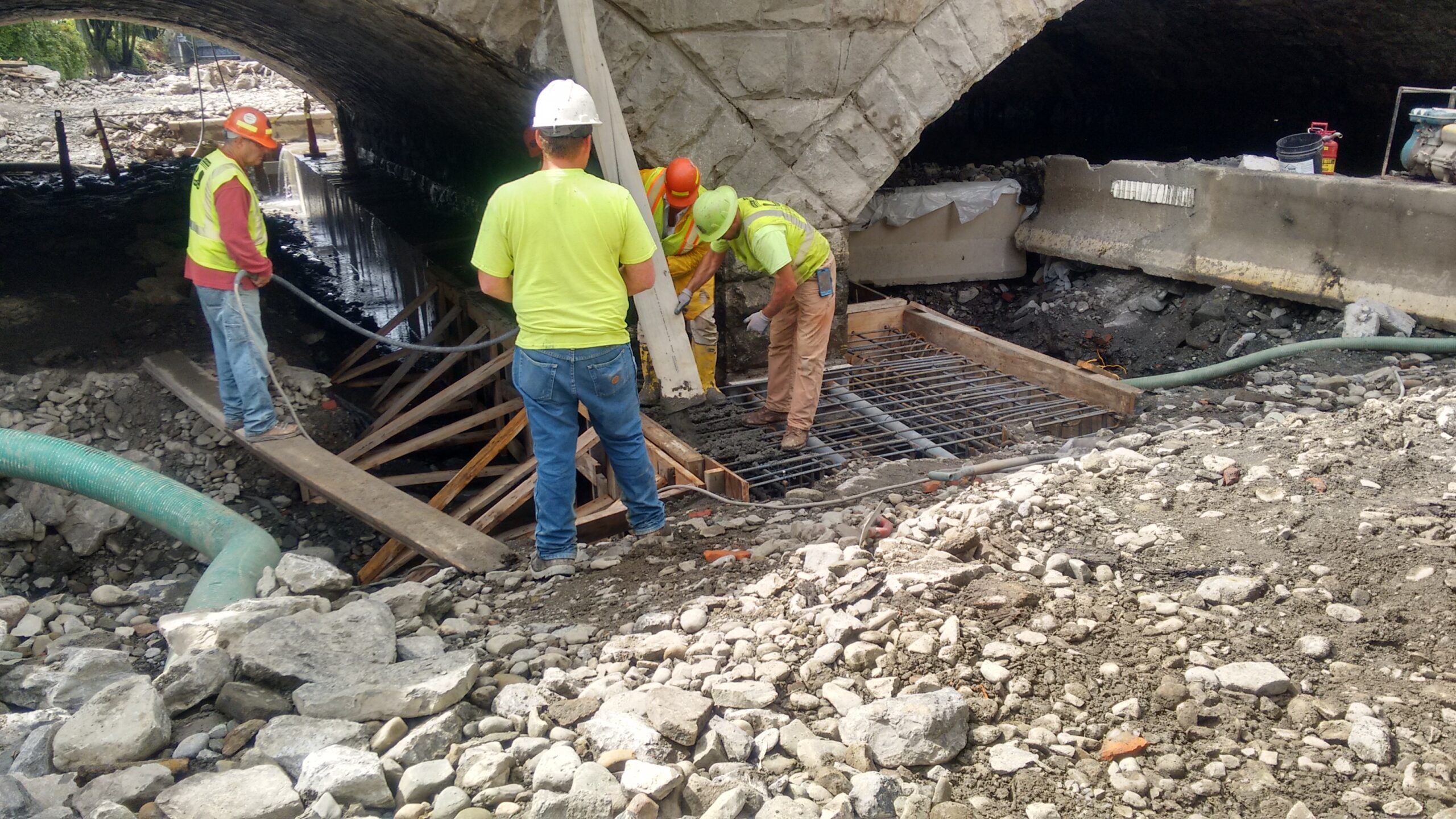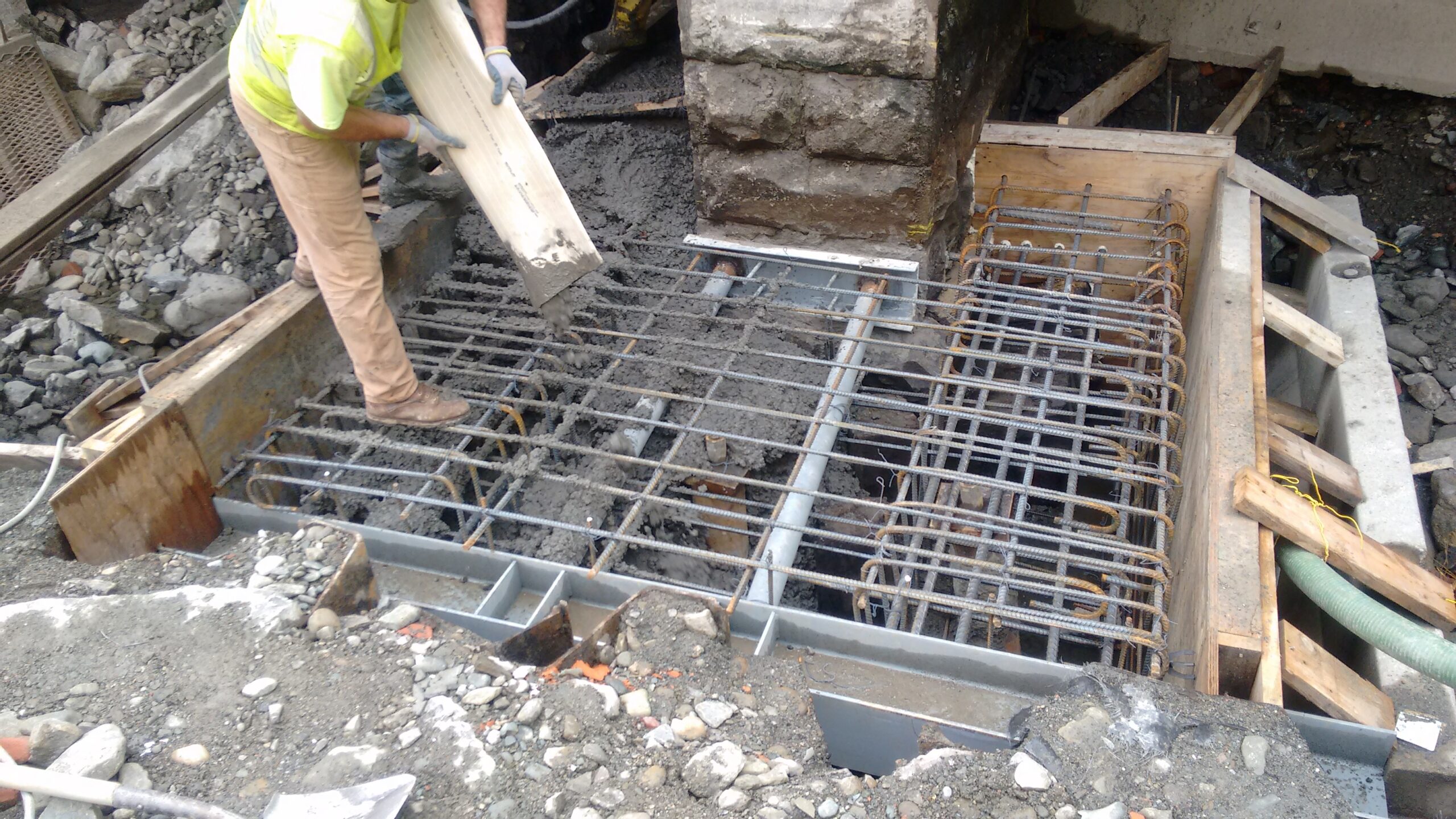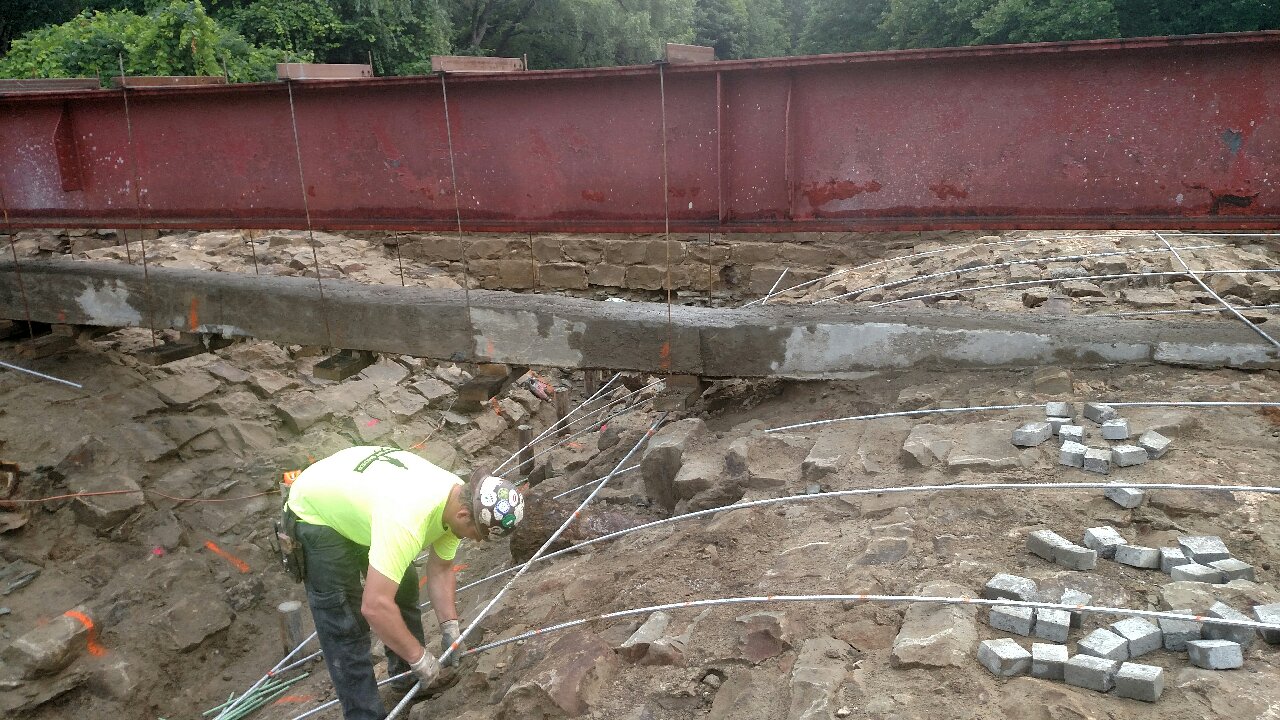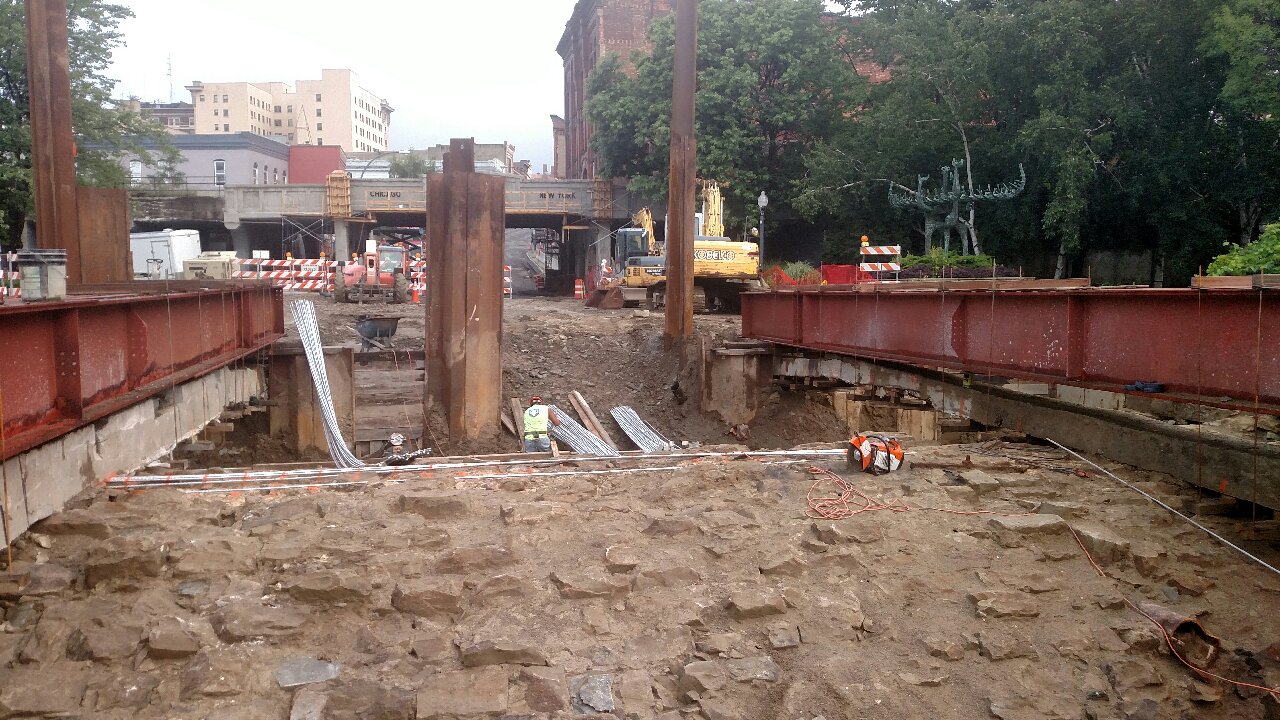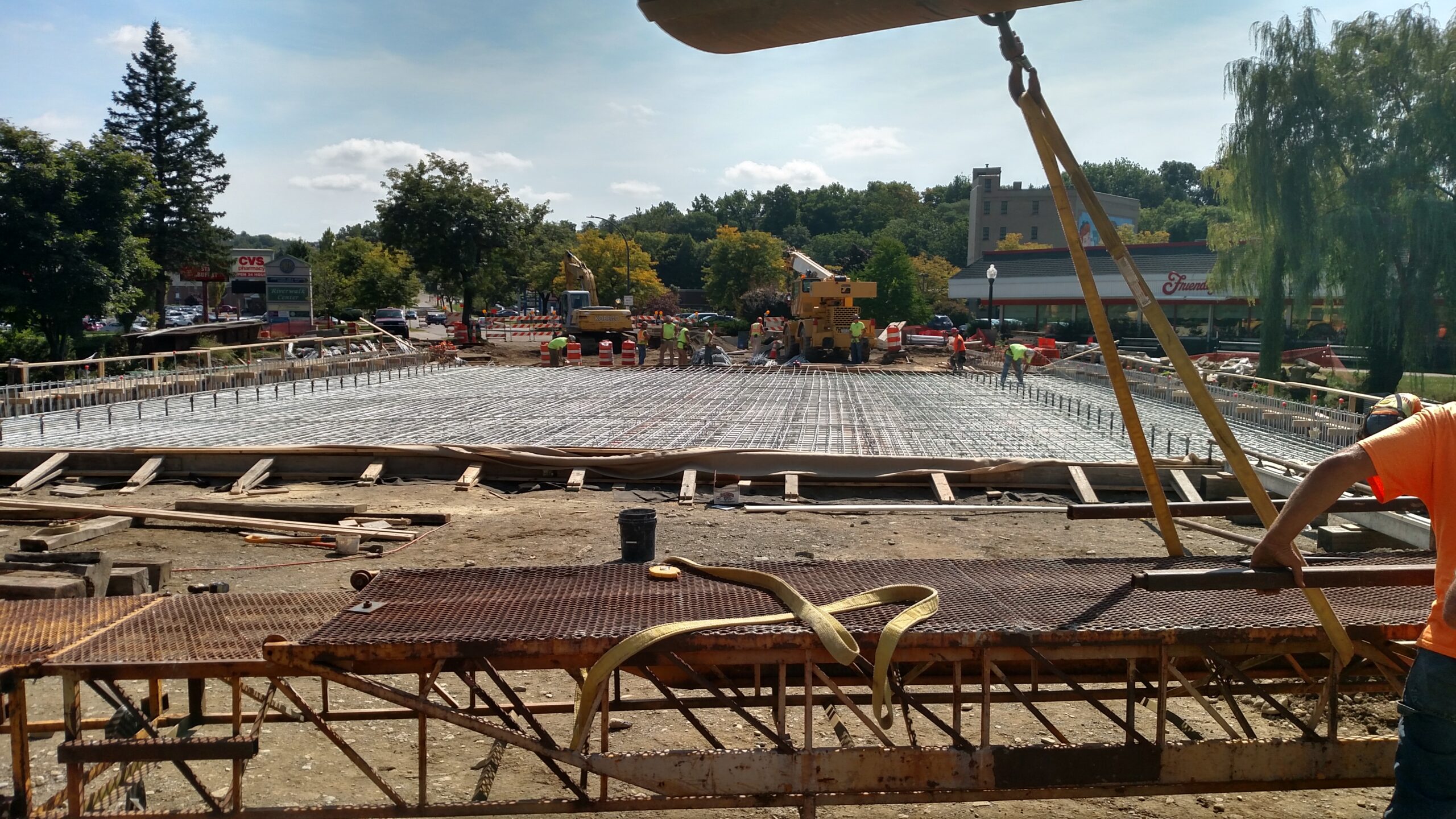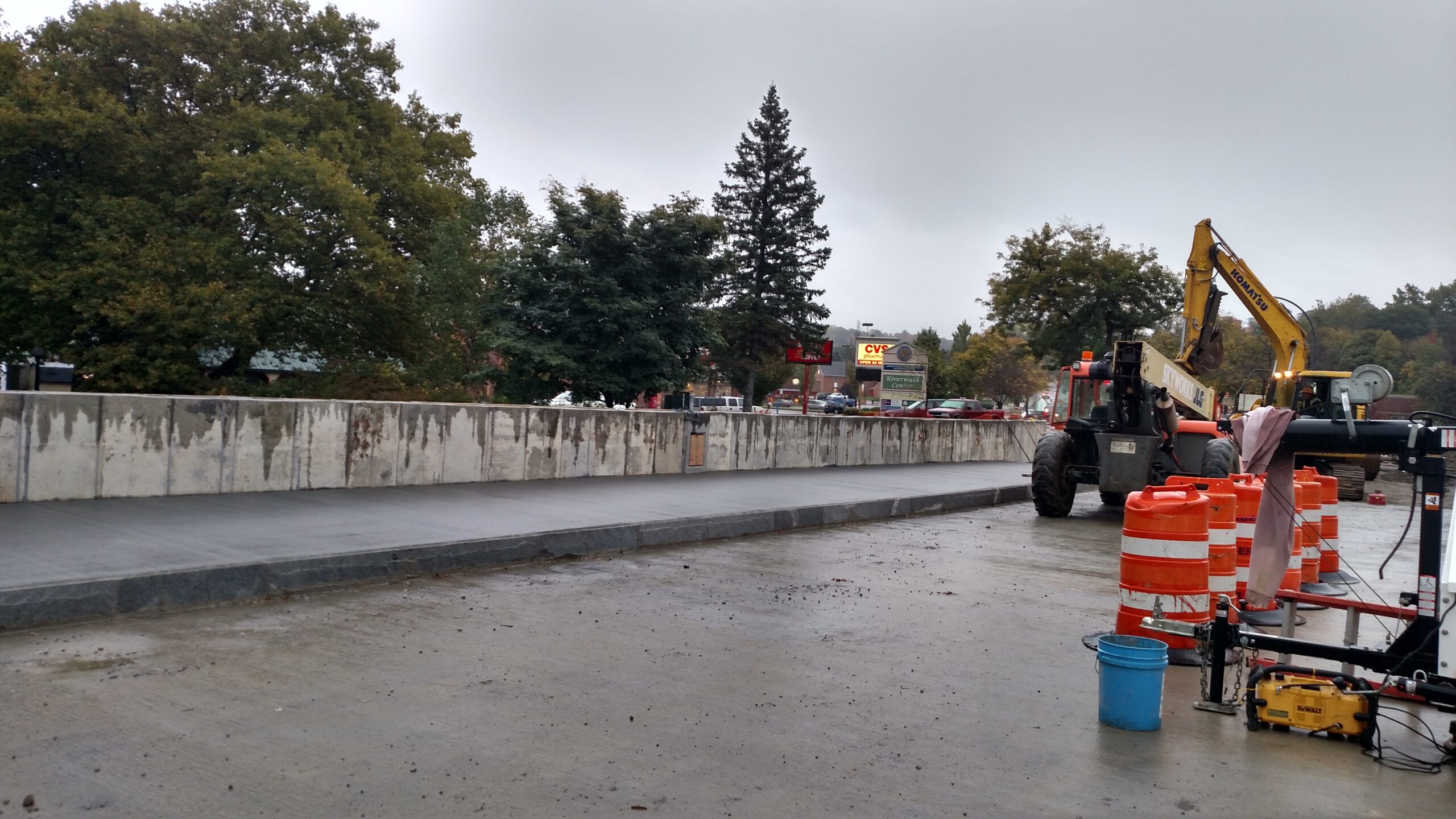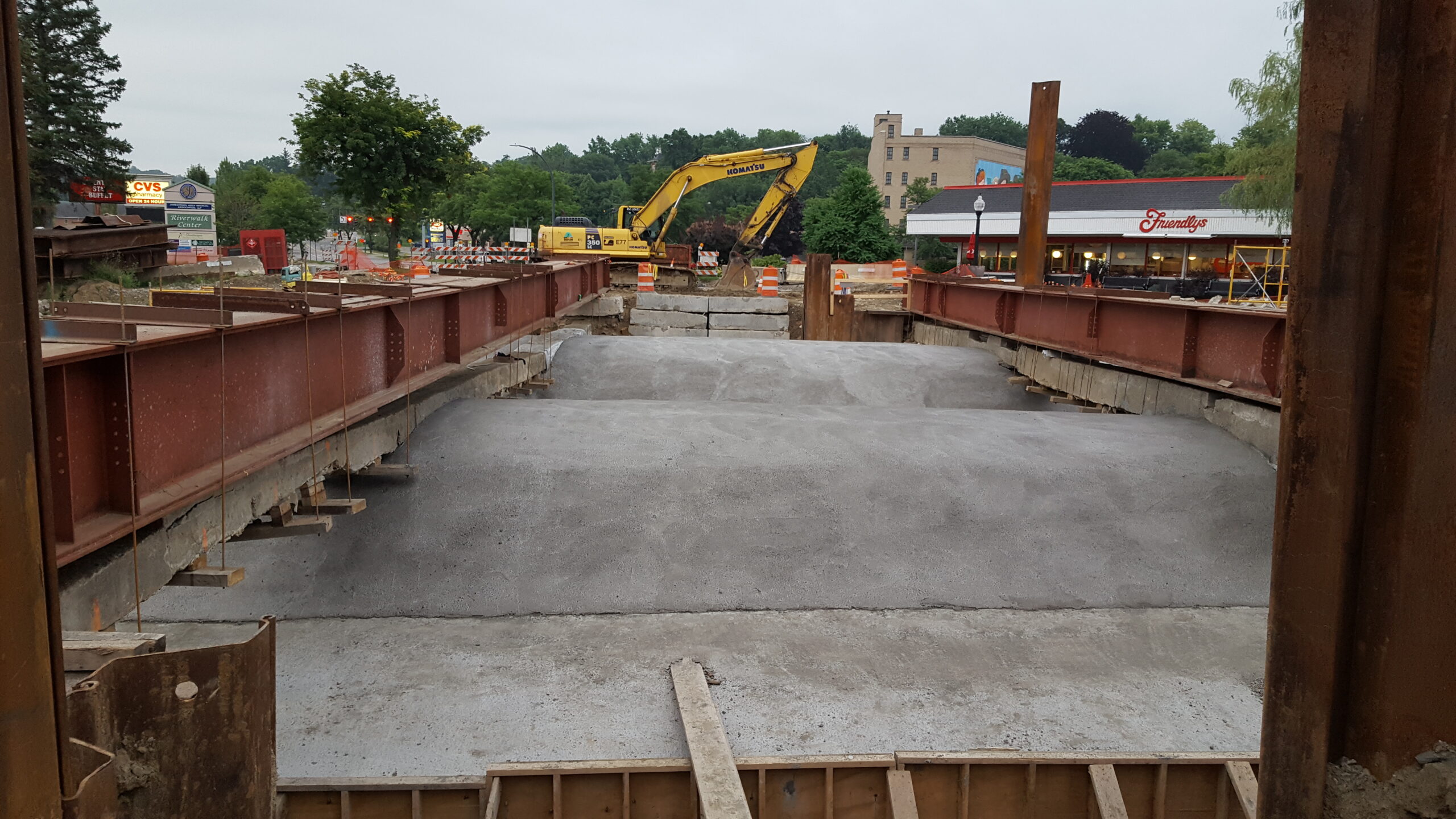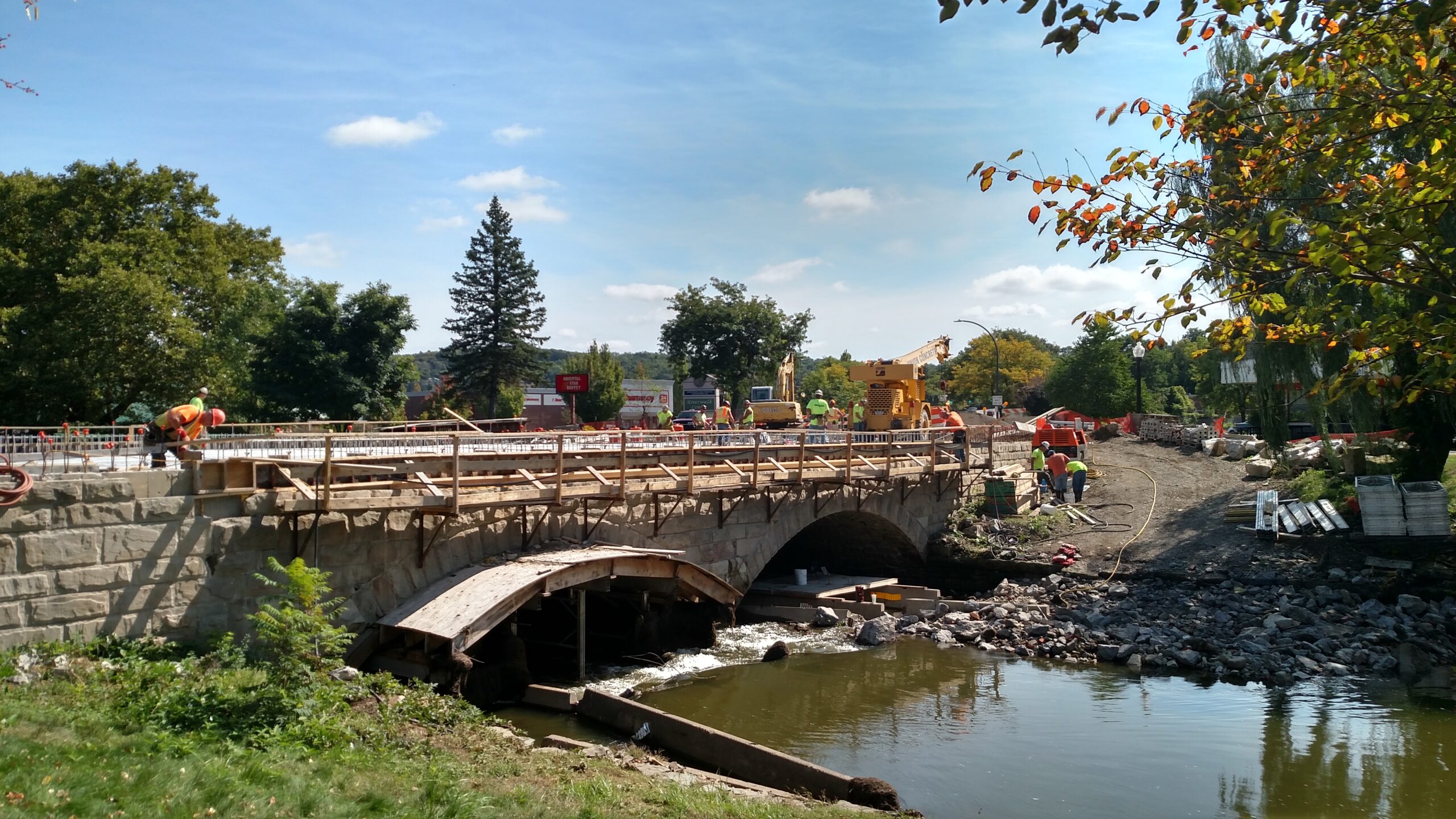Foundation Engineering
South Main Street Bridge Rehabilitation
South Main Street Bridge, built in 1872, is an arch bridge that spans the Chadakoin River in Jamestown, New York. Inspections of the bridge detected deterioration of the stone arches supporting the bridge and noted the settlement of the upstream end of the center pier. Due to the deterioration, the number of travel lanes were reduced and one pedestrian sidewalk was restricted. Several options for the bridge were evaluated, including full replacement or various rehabilitation options. After reviewing the options, rehabilitation of the bridge to preserve the stone arches was selected. This option was developed so that new reinforced concrete arches would be constructed on top of the stone arches. Based on our understanding of the center pier construction, our knowledge of the upstream settlement, and the chosen bridge structure rehabilitation, we developed a foundation design that would increase load-carrying capacity by installing micropiles and an expanded foundation.

